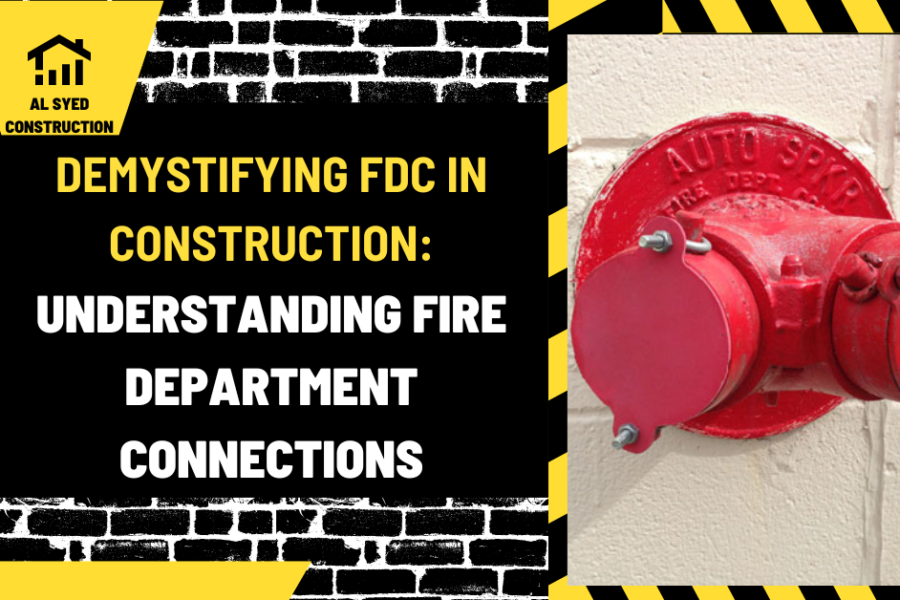Demystifying FDC in Construction: Understanding Fire Department Connections
Table of Contents
Introduction
In the realm of construction and building safety, the term “FDC” stands for Fire Department Connection. It is a critical component of a building’s fire protection system, providing a means for the fire department to supply additional water to the building’s sprinkler and standpipe systems during a fire emergency. This article explores the importance, components, and maintenance of FDCs in the construction industry, highlighting their role in ensuring the safety and preparedness of buildings in the event of a fire.
The Importance of Fire Department Connections
Enhancing Firefighting Capabilities
FDCs are essential for enhancing the firefighting capabilities of a building’s fire protection system. They allow fire department personnel to quickly connect hoses and pump water directly into the building’s sprinkler or standpipe system, supplementing the water supply and ensuring that there is adequate pressure to combat a fire effectively.
Compliance with Building Codes and Standards
The installation of FDCs is mandated by various building codes and fire safety standards, such as the National Fire Protection Association (NFPA) codes. Compliance with these regulations is crucial for obtaining building permits and ensuring the safety of occupants and property.
Components of a Fire Department Connection
Inlets and Connections
An FDC typically consists of one or more inlets, which are the points where fire hoses are connected. These inlets are equipped with clapper valves to prevent water from flowing out when not in use. The size and number of inlets depend on the building’s size and the requirements of the local fire department.
Check Valves and Backflow Preventers
To ensure that water flows only in the intended direction, FDCs are fitted with check valves and backflow preventers. These components prevent the backflow of water into the fire department’s hoses, which could pose a hazard to firefighters.
Maintenance and Inspection of Fire Department Connections
Regular Inspections and Testing
Regular inspections and testing of FDCs are vital to ensure their functionality and readiness in case of a fire. This includes checking for physical damage, ensuring that caps are in place and undamaged, and verifying that valves and backflow preventers are functioning properly.
Accessibility and Visibility
FDCs must be easily accessible and visible to fire department personnel. They should be clearly marked with signage and kept free of obstructions such as vegetation, snow, or parked vehicles.
Conclusion
Fire Department Connections are a crucial component of a building’s fire protection system, providing a means for firefighters to supplement the water supply and pressure during a fire emergency. Understanding the importance, components, and maintenance of FDCs is essential for construction professionals, building owners, and facility managers to ensure compliance with safety regulations and the preparedness of buildings to handle fire emergencies effectively. Regular inspections and ensuring accessibility and visibility of FDCs are key to maintaining their functionality and readiness when they are needed most.




